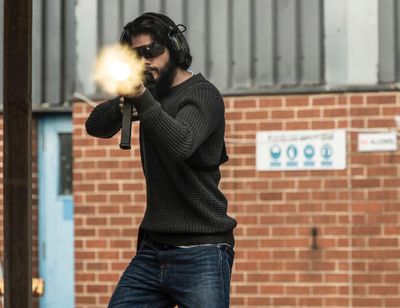Review: ‘American Assassin’ takes a different approach

From Bond to Bourne, feature films dealing with international espionage generally follow a familiar pattern. The hero tends to either be driven by a deep patriotism or at least the bits and pieces of country loyalty that can be remembered. The spy operates in a world where there can be massive shootouts in crowded areas and only the bad guys get hit. Those gun battles are mixed with a romance that either’s sexist or emotionally forced.
“American Assassin,” based on the works of spy novel writer Vince Flynn, takes a very different and refreshing approach. Flynn’s 13 spy novels that started in 1999 with “Transfer of Power” rejected the traditional world of spies, moving the focus to a world that was no longer a tug-of-war between two super powers but often held hostage by a bevy of terror groups around the globe. The approach of the spies playing a chess-like game gave way to more straight-on conflicts.
Flynn did turn to a familiar trope in having the best interests of the United States being protected by a super secret organization under the auspices of the CIA. The latest recruit is Mitch Rapp (Dylan O’Brien), a young man whose dislike for authority runs almost as deep of his hatred of terrorists. Rapp’s the biggest misdirection from standard spy lore as he’s not driven by loyalty or patriotism. A horrific act in his past has left him with a burning hatred to track down and kill as many terrorists as possible.
The CIA would like to channel that energy, and Rapp’s recruited by assistant CIA director Irene Kennedy (Sanaa Lathan) to join the super secret team under the guidance of Stan Hurley (Michael Keaton). Rapp may end up being the best asset the CIA has ever had but he must survive Hurley’s sadistic training program.
Training gets put on hold when the team must find a recover stolen plutonium before it can be turned into a nuclear weapon. This sends the team on a trek around the world trying to stop an opponent known only as The Ghost (Taylor Kirsch).
Casting O’Brien was a gamble by the producers as the biggest credits on his resume include “The Maze Runner” and “Teen Wolf.” His rawness is a bonus especially in scenes with Keaton. The pair have a nice antagonistic relationship built on a massive generational gap. The two play off each other very well.
Keaton shines because he’s shown great skill in playing both heroes (“Batman”) and villains (“Spider-Man: Homecoming”). His “American Assassin” character features a little bit of both and Keaton plays both sides with equal enthusiasm and energy.
“American Assassin” also rejects the outdated notion of what female roles should be in a spy story. Lathan brings the kind of commanding clout to make her role as strong as any player in this deadly game of cat and louse.
The big difference is Shiva Negar’s role of Annika, a CIA agent who has been undercover for a half decade and brought into the team to help stop The Ghost. Unlike so many spy stories, her character doesn’t eventually dwindle down to being the damsel in distress, an object of sexual advances by the hero or little more than a visual attraction.
Negar proves that a female character in a spy story can be both beautiful and deadly. The toughness she shows just adds another interesting level to a story that has already churned up the traditional spy story.
The final big element that separates “American Assassin” from the spy pack is that the screenplay by Stephen Schiff, Michael Finch, Edward Zwick and Marshall Herskovitz based on Flynn’s book never forgets the action is unfolding in a real world. There’s a gun battle in a small restaurant where multiple patrons get caught in crossfire. The chase scenes have to deal with traffic issues, and after a big fight, there are cuts and bruises.
Director Michael Cuesta brings a solid background in real-world spy stories as he produced multiple episodes of “Homeland” and is equally as in tune with offbeat heroes as the producer of “Elementary” that put a new spin of the character of Sherlock Holmes. Cuesta understands the balance of action and story to keep the audience engaged.
“American Assassin” does stretch the real world approach with the big finale, but this is a spy story and wrapping up the story with a handshake or a face slap would leave the audience – that has been trained on big action scenes – wanting for more. There’s also a slow pacing getting Rapp trained but that doesn’t last too long. This won’t be a problem if “American Assassin” becomes the launching pad for a new type of action spy drama as there are 16 books featuring the exploits of Rapp.
The movie eventually settles into what is an enjoyable blueprint for spy stories. Audiences will be able to connect more with characters like Mitch Rapp because it is very easy to understand being driven by deep and dark emotions. The job will be finished but it is not going to be wrapped up with a gentlemanly battle and a few wise quips.
And “American Assassin” gets the job done in a very real feeling world.